Investing is a journey that blends strategy, psychology, and a keen understanding of the markets. Among the pantheon of trading legends, Michael Marcus stands out as a true wizard in the realm of commodity trading. Renowned for his exceptional trading acumen and disciplined approach, Marcus has left an indelible mark on the trading world. This comprehensive guide delves into his life, trading strategies, and philosophy, offering you the tools to emulate his success in the dynamic world of commodity trading.
source: The Swedish Investor on YouTube
Who is Michael Marcus?
Michael Marcus is a name that resonates with excellence in commodity trading. Often referred to as the “Commodity Trading Wizard,” Marcus’s journey from a psychology student to a legendary trader is both inspiring and instructive. His remarkable ability to navigate the volatile commodity markets and consistently generate substantial profits has earned him a place among the trading elite. Marcus’s approach combines rigorous analysis, disciplined risk management, and a deep understanding of market psychology, making his strategies highly effective and replicable.
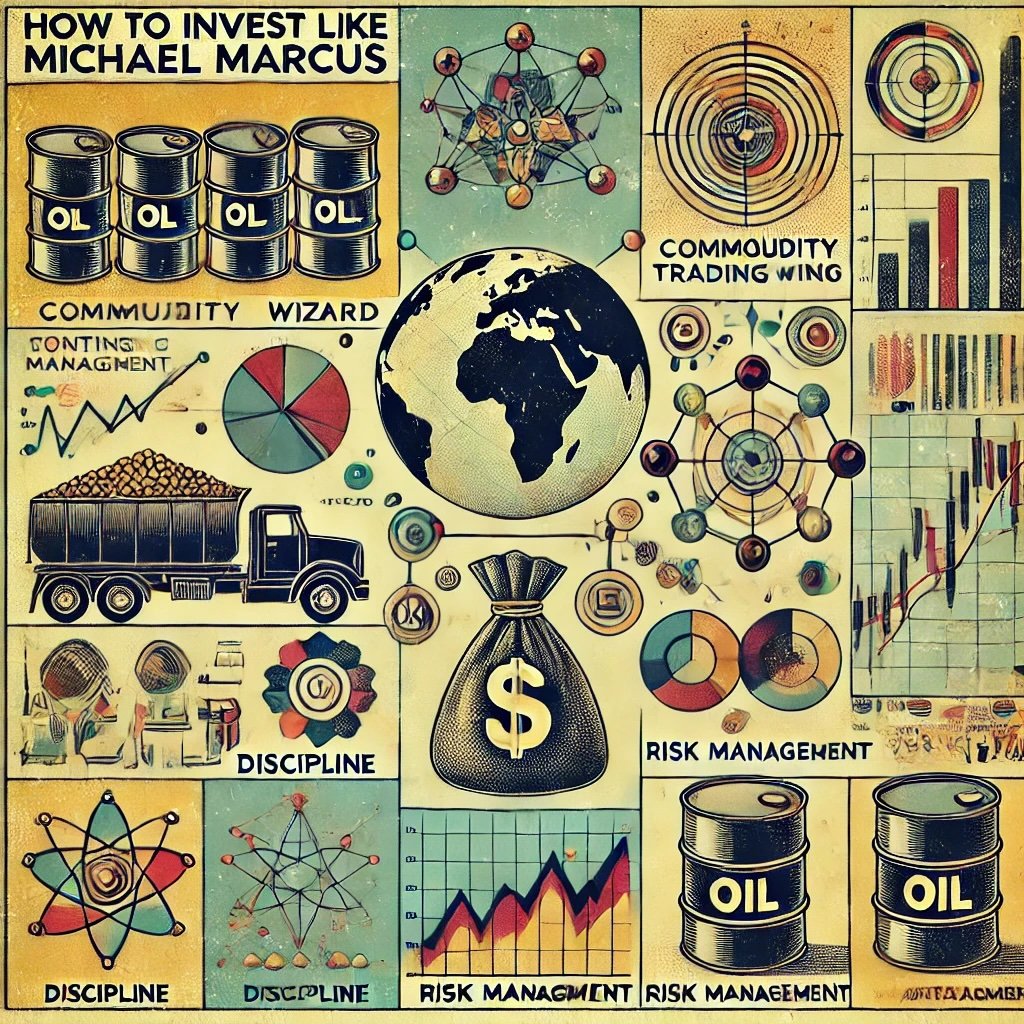
Introduction to Commodity Trading
Commodity trading involves buying and selling physical goods like gold, oil, agricultural products, and metals. Unlike stocks or bonds, commodities are tangible assets that play a crucial role in the global economy. Trading commodities offers unique opportunities and challenges, characterized by high volatility, leverage, and the influence of various external factors such as geopolitical events and natural disasters. Mastering commodity trading requires a blend of analytical skills, strategic planning, and emotional resilience.
Here we’ll attempt to explore and understand Michael Marcus’s trading strategies and philosophy. By dissecting his approach, from trend following to risk management, and examining his notable trades, you will gain valuable insights into what makes Marcus a standout figure in commodity trading. Whether you’re a seasoned trader or just starting out, adopting Marcus’s methodologies can enhance your trading performance and help you achieve consistent success in the markets.
Tip: Embrace a mindset of continuous learning and adaptation. The markets are ever-evolving, and staying informed is key to long-term success.

Who is Michael Marcus?
Background and Early Life of Michael Marcus
Michael Marcus was born in 1950 in Chicago, Illinois. Growing up in a modest household, Marcus developed an early interest in understanding human behavior and decision-making processes, which led him to pursue a degree in psychology. However, his path took a dramatic turn when he discovered his passion for trading during his college years. Fascinated by the complexities of the markets, Marcus decided to channel his analytical skills and psychological insights into the world of commodity trading.
Journey from a Psychology Student to a Legendary Commodity Trader
Marcus’s transition from a psychology student to a trading legend is a testament to his adaptability and keen observational skills. After graduating, he ventured into the trading floors, where he quickly realized that success in trading was not solely about instincts or luck—it was about strategy, discipline, and understanding market dynamics. Marcus immersed himself in the study of market trends, economic indicators, and trading patterns, honing his skills through both theoretical knowledge and practical experience.
One of the pivotal moments in Marcus’s career was his mentorship under Ed Seykota, a renowned commodities trader and a pioneer in computerized trading systems. Seykota’s emphasis on trend following and systematic trading had a profound impact on Marcus, shaping his approach to trading and risk management.
Key Achievements and Contributions to the Trading World
Michael Marcus’s trading career is marked by several significant achievements:
- Record-Breaking Returns: Marcus is known for achieving some of the highest returns in the trading world. In just a few years, he turned a relatively modest investment into millions, showcasing the power of his trading strategies.
- Mentorship and Teaching: Marcus has dedicated a substantial portion of his career to mentoring aspiring traders. His insights and teachings have helped countless individuals understand the intricacies of commodity trading and develop their own successful strategies.
- Author and Speaker: Marcus has authored articles and participated in numerous speaking engagements, sharing his knowledge and experiences with a broader audience. His contributions have enriched the trading community, providing valuable lessons on discipline, strategy, and risk management.
- Innovative Trading Strategies: Marcus’s development and refinement of trend-following strategies have influenced modern trading techniques. His emphasis on systematic approaches and psychological resilience continues to inspire traders worldwide.
Tip: Seek out mentors and continuous learning opportunities. Learning from experienced traders like Ed Seykota can provide invaluable insights and accelerate your trading journey.

The Evolution of Marcus’s Trading Style
Initial Struggles and Early Lessons Learned
Like many successful traders, Michael Marcus faced significant challenges in his early trading days. The initial years were marked by volatility and occasional losses, serving as harsh lessons in the unforgiving world of commodity trading. Marcus quickly learned that emotional decision-making could lead to detrimental outcomes. These early struggles reinforced the importance of developing a disciplined approach and adhering to a well-defined trading strategy.
One of the key lessons Marcus learned was the necessity of risk management. Early losses taught him that preserving capital was paramount, and that uncontrolled risk could erode his trading account rapidly. This realization led him to adopt a more structured approach, focusing on strategies that balanced potential returns with manageable risk levels.
Mentorship Under Ed Seykota and Its Influence on His Trading
A turning point in Marcus’s career was his mentorship under Ed Seykota, one of the pioneers of computerized trading systems and trend-following strategies. Seykota’s philosophy emphasized the importance of systematic trading and psychological discipline—principles that would deeply influence Marcus’s trading style.
Under Seykota’s guidance, Marcus adopted a trend-following approach, which involves identifying and capitalizing on sustained market movements. Seykota’s emphasis on mechanical trading rules and the elimination of emotional interference resonated with Marcus, leading him to develop a more disciplined and data-driven trading methodology.
Seykota also introduced Marcus to the concept of position sizing, a critical component of risk management. By determining the appropriate size of each trade based on market volatility and risk tolerance, Marcus could control his exposure and protect his capital effectively.
Development of His Unique Approach to Trading Commodities
Building on the foundations laid by Seykota, Michael Marcus developed his own unique approach to commodity trading. His methodology blends trend following with robust risk management and psychological resilience. Key elements of his approach include:
- Mechanical Trading Rules: Marcus relies on predefined rules for entering and exiting trades, reducing the influence of emotions and ensuring consistency in his trading decisions.
- Diversification: He diversifies his trading across multiple commodity markets, spreading risk and capitalizing on various market trends.
- Dynamic Position Sizing: By adjusting position sizes based on market volatility, Marcus maintains a balanced risk exposure, ensuring that no single trade can significantly impact his portfolio.
- Continuous Learning: Marcus remains committed to continuous learning and adaptation, refining his strategies based on market developments and personal experiences.
Tip: Develop a unique trading style by integrating mentorship insights with your own experiences and observations. A personalized approach can enhance your trading effectiveness and resilience.

Core Principles of Michael Marcus’s Trading Strategy
Michael Marcus’s trading strategy is grounded in several core principles that have consistently delivered superior results in the commodity markets. These principles—trend following, risk management, leverage, and discipline—form the bedrock of his successful trading methodology.
Trend Following: Importance of Identifying and Riding Market Trends
Trend following is the cornerstone of Marcus’s trading strategy. The essence of trend following lies in identifying sustained market movements and capitalizing on them until signs of reversal appear. Marcus believes that markets move in trends—upwards, downwards, or sideways—and that trading in the direction of these trends can yield significant profits.
- How It Works: Marcus employs technical analysis tools such as moving averages, trendlines, and momentum indicators to identify prevailing market trends. Once a trend is confirmed, he takes a position in the direction of the trend and holds it until clear signs of reversal occur.
- Benefits: Trend following allows traders to ride substantial market movements, maximizing returns while minimizing the impact of short-term volatility. By aligning with the broader market direction, Marcus increases the probability of successful trades.
- Example: If gold prices are in an upward trend, Marcus would enter a long position and hold it until indicators suggest that the trend is weakening or reversing.
Tip: Utilize trend identification tools like moving averages and momentum indicators to spot and confirm market trends, enhancing the accuracy of your trading decisions.
Risk Management: Strategies for Controlling Risk and Preserving Capital
Effective risk management is paramount in Marcus’s trading strategy. It ensures that losses are controlled and capital is preserved, allowing for sustained trading success over the long term.
- Position Sizing: Marcus determines the size of each trade based on the volatility of the market and his overall risk tolerance. By allocating a fixed percentage of his capital to each trade, he ensures that no single position can significantly deplete his trading account.
- Stop Losses: Implementing stop-loss orders is a critical component of Marcus’s risk management. These orders automatically exit a trade when it moves against him by a predefined amount, limiting potential losses.
- Diversification: By trading across multiple commodity markets, Marcus spreads his risk, reducing the impact of adverse movements in any single market.
Tip: Always define your risk parameters before entering a trade. Use position sizing and stop-loss orders to protect your capital and maintain a balanced risk exposure.
Leverage: Use of Leverage to Amplify Returns and the Associated Risks
Leverage is a powerful tool that can amplify returns, but it also increases the potential for losses. Marcus leverages his trading positions to enhance his returns, but he does so with a keen understanding of the associated risks.
- Controlled Leverage: Marcus employs leverage judiciously, ensuring that his leveraged positions do not exceed his risk tolerance. By maintaining a balanced leverage ratio, he can maximize returns while keeping risks in check.
- Margin Management: Effective margin management is crucial when using leverage. Marcus monitors his margin requirements closely, ensuring that his leveraged positions remain within safe limits to avoid margin calls and forced liquidations.
Tip: Use leverage cautiously. While it can enhance returns, excessive leverage can lead to significant losses. Maintain a balanced leverage ratio that aligns with your risk tolerance and trading objectives.
Patience and Discipline: The Role of Waiting for the Right Market Conditions
Patience and discipline are essential traits for any successful trader, and Marcus exemplifies these qualities in his trading approach. Waiting for the right market conditions ensures that trades are entered and exited based on solid signals rather than impulsive decisions.
- Waiting for Confirmation: Marcus doesn’t rush into trades. He waits for clear trend signals and confirmations before committing his capital, ensuring higher probability trades.
- Sticking to the Plan: Discipline means adhering strictly to the trading rules and not deviating based on emotions or market noise. Marcus maintains his trading plan consistently, regardless of short-term fluctuations or external pressures.
Tip: Develop the patience to wait for optimal trading conditions and the discipline to stick to your trading rules. This balance helps in executing trades with higher confidence and reduced emotional interference.
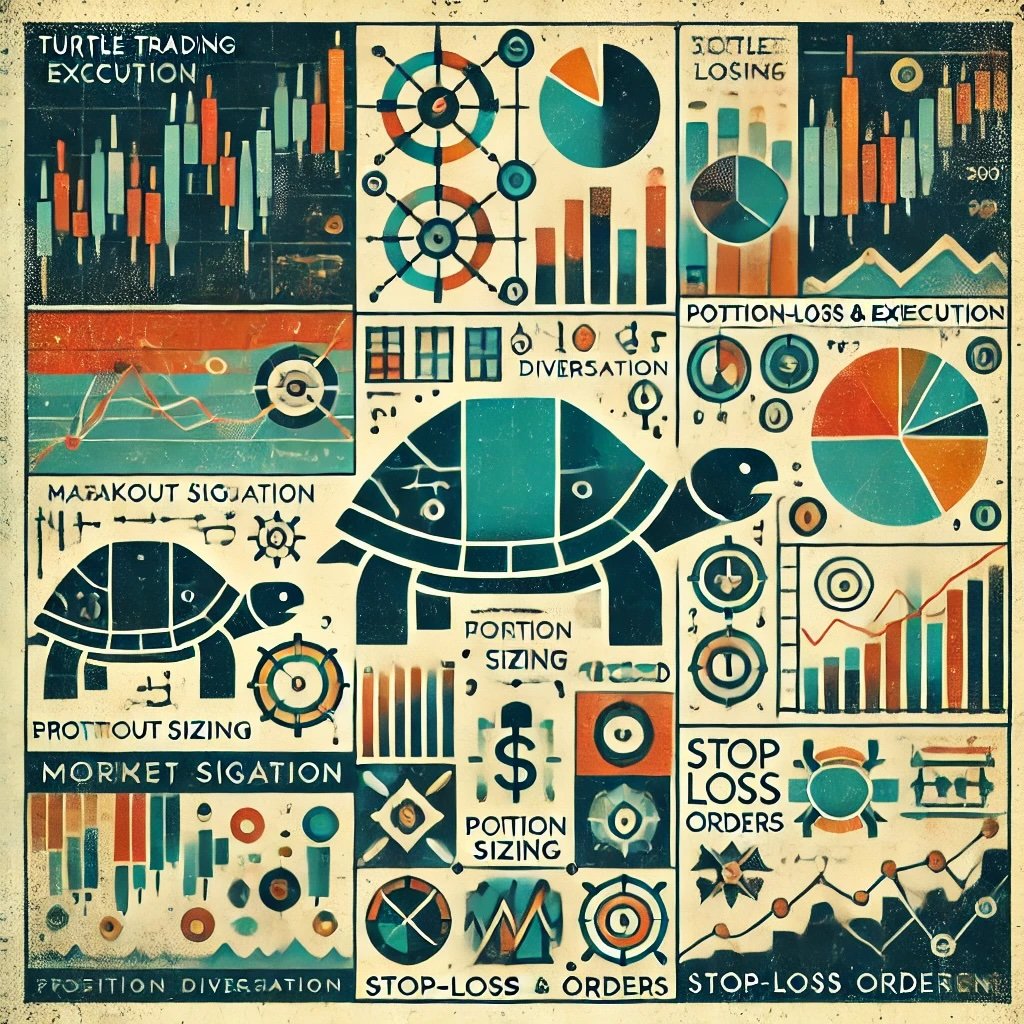
Turtle Trading Rules and Execution
Detailed Breakdown of the Turtle Trading Rules
The Turtle Trading System, developed by Richard Dennis and William Eckhardt, is a trend-following strategy that Michael Marcus has adopted and refined. Understanding these rules is essential to implementing the system effectively.
- Market Selection:
- Diversification: Trade a broad range of markets, including commodities, currencies, and indices. Diversifying reduces risk and increases the potential for capturing various market trends.
- Liquidity: Choose highly liquid markets to ensure ease of entry and exit, minimizing slippage and execution delays.
- Entry Rules:
- Breakout Entry: Enter a trade when the price breaks above the 20-day high (for long positions) or below the 20-day low (for short positions).
- Confirmation: Ensure that the breakout is supported by increased volume or other technical indicators to confirm its validity.
- Exit Rules:
- Trend Reversal: Exit a position when the price breaks below the 10-day low (for long positions) or above the 10-day high (for short positions).
- Stop Loss: Implement stop-loss orders based on market volatility to limit potential losses.
- Position Sizing:
- Volatility-Based Sizing: Determine position sizes based on the Average True Range (ATR) of the market, adjusting for volatility to maintain consistent risk exposure.
- Fixed Percentage: Allocate a fixed percentage of the trading account to each position, ensuring disciplined risk management.
- Risk Management:
- Maximum Risk Per Trade: Limit the risk to a small percentage of the total trading capital per trade (e.g., 1-2%).
- Diversified Exposure: Spread risk across multiple markets to avoid overexposure to any single market or asset.
How to Execute Trades According to the System
Executing trades in the Turtle Trading System requires strict adherence to the predefined rules, ensuring consistency and discipline in every trading decision.
- Identify the Trend:
- Use technical analysis tools such as moving averages and trendlines to determine the current trend in a market.
- Confirm the trend with additional indicators like the Relative Strength Index (RSI) or MACD to validate its strength.
- Monitor Breakouts:
- Watch for price breakouts above the 20-day high or below the 20-day low.
- Confirm the breakout with increased trading volume or other supportive technical signals.
- Enter the Trade:
- Once a breakout is confirmed, enter a long position if the price breaks above the 20-day high or a short position if it breaks below the 20-day low.
- Calculate the appropriate position size based on market volatility and risk parameters.
- Set Stop Losses:
- Immediately place a stop-loss order based on the ATR or other volatility measures.
- Adjust the stop-loss as the trade progresses to lock in profits and protect against reversals.
- Manage the Position:
- Monitor the trade continuously, ensuring it aligns with the trend-following criteria.
- Be prepared to exit the trade based on the trend reversal rules or if the stop-loss is triggered.
- Exit the Trade:
- Exit the position when the price breaks below the 10-day low for long positions or above the 10-day high for short positions.
- Alternatively, exit the trade if the stop-loss is hit, limiting the loss as per the predefined risk management rules.
Examples of Specific Trading Scenarios and Decisions
Scenario 1: Long Position Entry
- Market: Crude Oil
- Current Trend: Upward
- 20-Day High: $70
- Breakout: Price rises above $70
- Action: Enter a long position at $71
- Stop Loss: Set at $65 (based on ATR calculation)
- Outcome: As the trend continues, the price moves to $80. The stop-loss is adjusted to $75 to lock in profits. The position is eventually exited when the price breaks below the 10-day low of $75.
Scenario 2: Short Position Entry
- Market: Gold
- Current Trend: Downward
- 20-Day Low: $1,800
- Breakout: Price falls below $1,800
- Action: Enter a short position at $1,795
- Stop Loss: Set at $1,850 (based on ATR calculation)
- Outcome: The price continues to drop to $1,750. The stop-loss is adjusted to $1,780 to protect profits. The position is closed when the price breaks above the 10-day high of $1,780.
Scenario 3: Position Exit
- Market: S&P 500 Futures
- Initial Entry: Long at 3,000
- Current Price: 3,200
- 10-Day Low: 3,150
- Action: Exit the position if the price falls below 3,150
- Outcome: The price retraces to 3,140, triggering the exit rule. The position is closed to preserve profits and prevent further losses.
Tip: Practice these scenarios using a demo account to familiarize yourself with the Turtle Trading System’s rules and execution process before committing real capital.
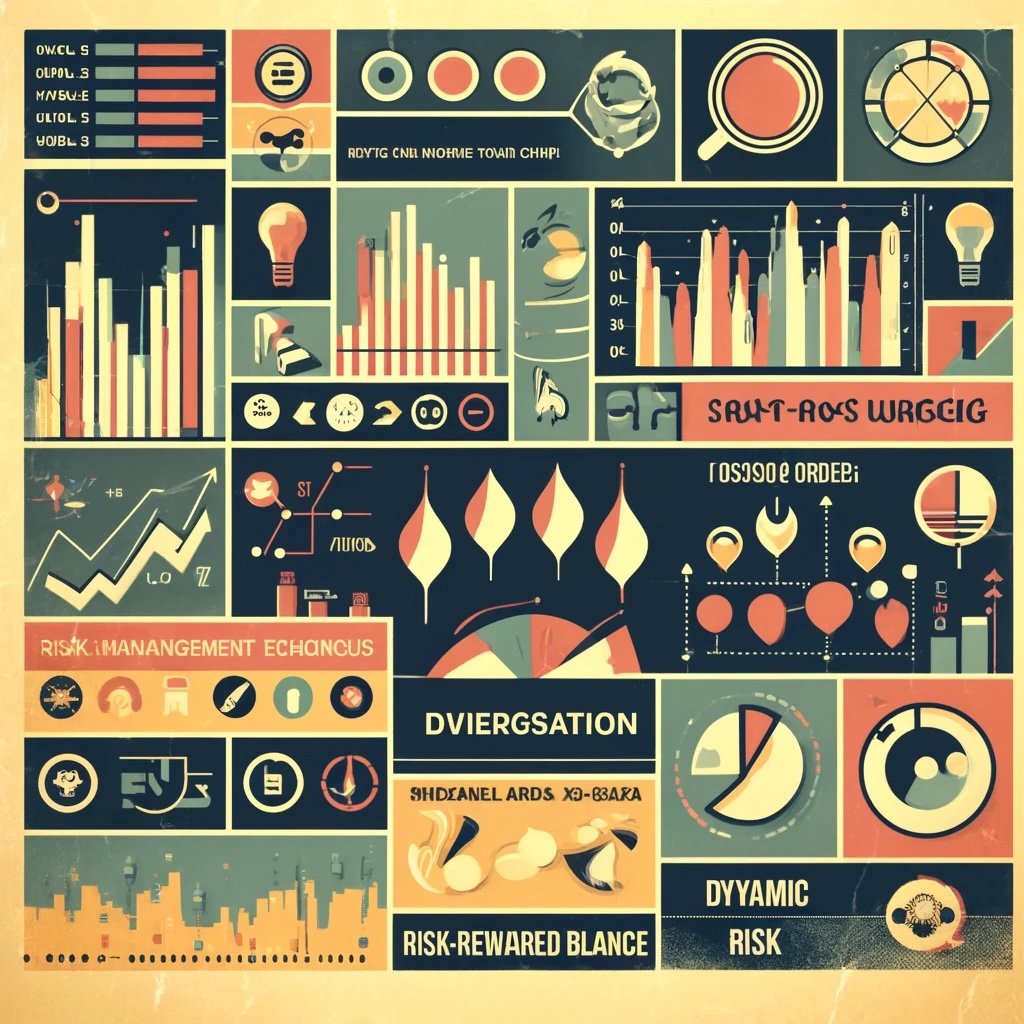
Risk Management Techniques
Detailed Look at Marcus’s Approach to Managing Risk in Commodity Trading
Risk management is a fundamental aspect of Michael Marcus’s trading strategy. By implementing robust risk management techniques, Marcus ensures that his trading activities remain sustainable and that losses are kept within manageable limits. His approach focuses on several key areas:
- Position Sizing:
- Volatility-Based Position Sizing: Marcus uses the Average True Range (ATR) to measure market volatility and adjust position sizes accordingly. Higher volatility results in smaller position sizes, while lower volatility allows for larger positions.
- Fixed Percentage Allocation: He allocates a fixed percentage of his trading capital to each position, ensuring consistent risk exposure across all trades.
- Stop Loss Orders:
- Dynamic Stop Losses: Marcus sets stop-loss orders based on market volatility, allowing for flexibility in volatile markets while maintaining protection against significant losses.
- Trailing Stops: As a trade moves in his favor, Marcus adjusts the stop-loss level to lock in profits and minimize potential losses from reversals.
- Diversification:
- Multiple Markets: By trading a diverse range of commodity markets, Marcus spreads his risk, reducing the impact of adverse movements in any single market.
- Asset Class Diversification: In addition to commodities, Marcus may diversify into other asset classes like currencies or indices to further balance risk.
- Risk-Reward Balance:
- Favorable Risk-Reward Ratio: Marcus aims for trades with a favorable risk-reward ratio, where potential rewards outweigh the potential risks. This balance ensures that even if some trades result in losses, the overall portfolio remains profitable.
- Consistent Evaluation: He regularly evaluates the risk-reward profile of his trades, adjusting strategies to maintain an optimal balance.
Use of Position Sizing, Stop-Loss Orders, and Diversification
Position Sizing: Position sizing is a critical component of Marcus’s risk management toolkit. By adjusting the size of each trade based on market volatility, he ensures that no single position can significantly harm his trading account. This method allows for consistent risk exposure, regardless of the market’s volatility.
- Example: In a highly volatile market, Marcus might reduce his position size to limit exposure, while in a stable market, he might increase his position size to capitalize on potential gains.
Stop-Loss Orders: Stop-loss orders are essential for protecting capital and minimizing losses. Marcus sets stop-loss levels based on the ATR, ensuring that they are neither too tight (which could lead to premature exits) nor too loose (which could result in substantial losses).
- Example: If the ATR indicates high volatility, Marcus sets a wider stop-loss to accommodate larger price swings, reducing the likelihood of being stopped out prematurely.
Diversification: Diversification is another cornerstone of Marcus’s risk management strategy. By spreading investments across various commodity markets and asset classes, he reduces the risk associated with any single market’s poor performance.
- Example: Marcus might trade a mix of agricultural commodities, energy products, and precious metals, ensuring that losses in one area are offset by gains in another.
Tip: Implement a comprehensive risk management plan that includes position sizing, stop-loss orders, and diversification to protect your capital and ensure long-term trading success.
Strategies for Balancing Risk and Reward in Volatile Markets
Balancing risk and reward is essential for optimizing trading performance, especially in the inherently volatile commodity markets. Michael Marcus employs several strategies to achieve this balance:
- Risk-Reward Assessment:
- Pre-Trade Analysis: Before entering a trade, Marcus assesses the potential risk and reward, ensuring that the trade offers a favorable risk-reward ratio.
- Trade Selection: He selectively enters trades that meet his risk-reward criteria, avoiding those with disproportionate risk relative to potential rewards.
- Adjusting Position Sizes:
- Volatility Adjustments: By dynamically adjusting position sizes based on market volatility, Marcus maintains a consistent level of risk across all trades.
- Portfolio Exposure: He monitors overall portfolio exposure to ensure that cumulative risk remains within acceptable limits.
- Diversified Trading Strategies:
- Combining Trend Following with Mean Reversion: Marcus may incorporate a mix of trend-following and mean-reversion strategies to capture different types of market movements, enhancing the overall risk-reward profile of his portfolio.
- Sector Rotation: Rotating investments across different commodity sectors based on prevailing trends and economic conditions helps in managing risk while seeking opportunities for higher returns.
- Continuous Monitoring and Adjustment:
- Real-Time Analysis: Marcus continuously monitors his trades and market conditions, making adjustments as needed to maintain a balanced risk-reward ratio.
- Performance Review: Regularly reviewing trading performance allows him to identify areas for improvement and refine his strategies accordingly.
Tip: Continuously assess and adjust your risk-reward balance based on market conditions and your trading performance to ensure sustained profitability and risk management.
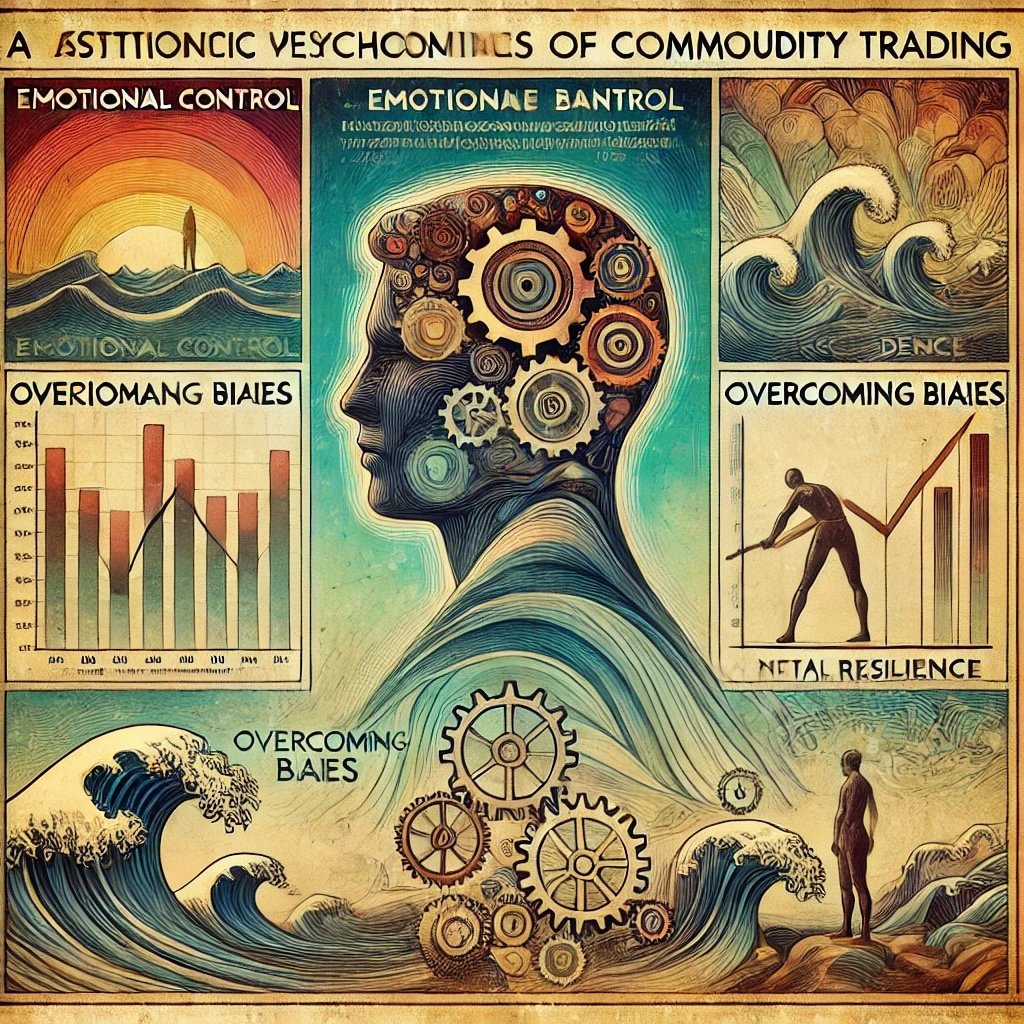
The Role of Psychology in Commodity Trading
Marcus’s Views on the Psychological Challenges of Trading
Michael Marcus firmly believes that psychology plays a pivotal role in trading success. The emotional and psychological challenges inherent in trading can significantly impact decision-making and overall performance. Marcus emphasizes the importance of understanding and managing these psychological factors to maintain discipline and make objective trading decisions.
- Emotional Control: Fear and greed are the primary emotions that can lead to impulsive trading decisions. Marcus advocates for maintaining emotional control to stick to the trading plan, even during periods of high volatility or unexpected market movements.
- Confidence and Conviction: Confidence in one’s trading strategy and decisions is crucial. Marcus stresses the importance of believing in the system and having conviction in your trading approach, which helps in navigating through uncertain market conditions.
- Overcoming Biases: Cognitive biases, such as confirmation bias and loss aversion, can distort perception and lead to poor trading decisions. Marcus advises traders to recognize and mitigate these biases through disciplined, rule-based trading.
Techniques for Maintaining Discipline and Emotional Control
Maintaining discipline and emotional control is essential for executing successful trades consistently. Marcus employs several techniques to cultivate these traits:
- Strict Adherence to Trading Rules:
- Mechanical Execution: By following predefined trading rules without deviation, Marcus minimizes the influence of emotions on trading decisions.
- Systematic Approach: A systematic trading approach ensures that decisions are based on data and analysis rather than emotional impulses.
- Mindfulness and Stress Management:
- Mindfulness Practices: Engaging in mindfulness or meditation can help traders stay calm and focused, reducing the impact of stress and emotions.
- Stress Reduction Techniques: Implementing stress management techniques, such as deep breathing or regular exercise, can enhance emotional resilience.
- Trading Journals and Reflection:
- Documenting Trades: Keeping a detailed trading journal allows Marcus to review and reflect on his trades, identifying patterns and areas for improvement.
- Analyzing Mistakes: Reflecting on past mistakes helps in learning from them and avoiding similar errors in the future.
- Routine and Consistency:
- Structured Routine: Establishing a consistent trading routine helps in maintaining discipline and focus, reducing the likelihood of impulsive decisions.
- Regular Breaks: Taking regular breaks during trading sessions can prevent burnout and maintain mental clarity.
Tip: Incorporate mindfulness and disciplined routines into your trading practice to enhance emotional control and maintain consistency in your trading strategy.
The Importance of Mental Resilience in Executing Trades Effectively
Mental resilience is the ability to withstand and recover from setbacks, adapt to changing conditions, and maintain focus and determination in the face of challenges. In commodity trading, where market conditions can shift rapidly and unpredictably, mental resilience is crucial for long-term success.
- Handling Losses: Marcus understands that losses are an inevitable part of trading. Developing mental resilience allows traders to accept losses without letting them affect future trading decisions negatively.
- Staying Composed: During periods of market turbulence, maintaining composure helps in making rational decisions rather than reacting impulsively to short-term market movements.
- Adaptability: Being mentally resilient enables traders to adapt their strategies and approaches in response to evolving market conditions, ensuring continued effectiveness and relevance.
Tip: Build mental resilience by embracing losses as learning opportunities, maintaining composure during market volatility, and staying adaptable to changing conditions.
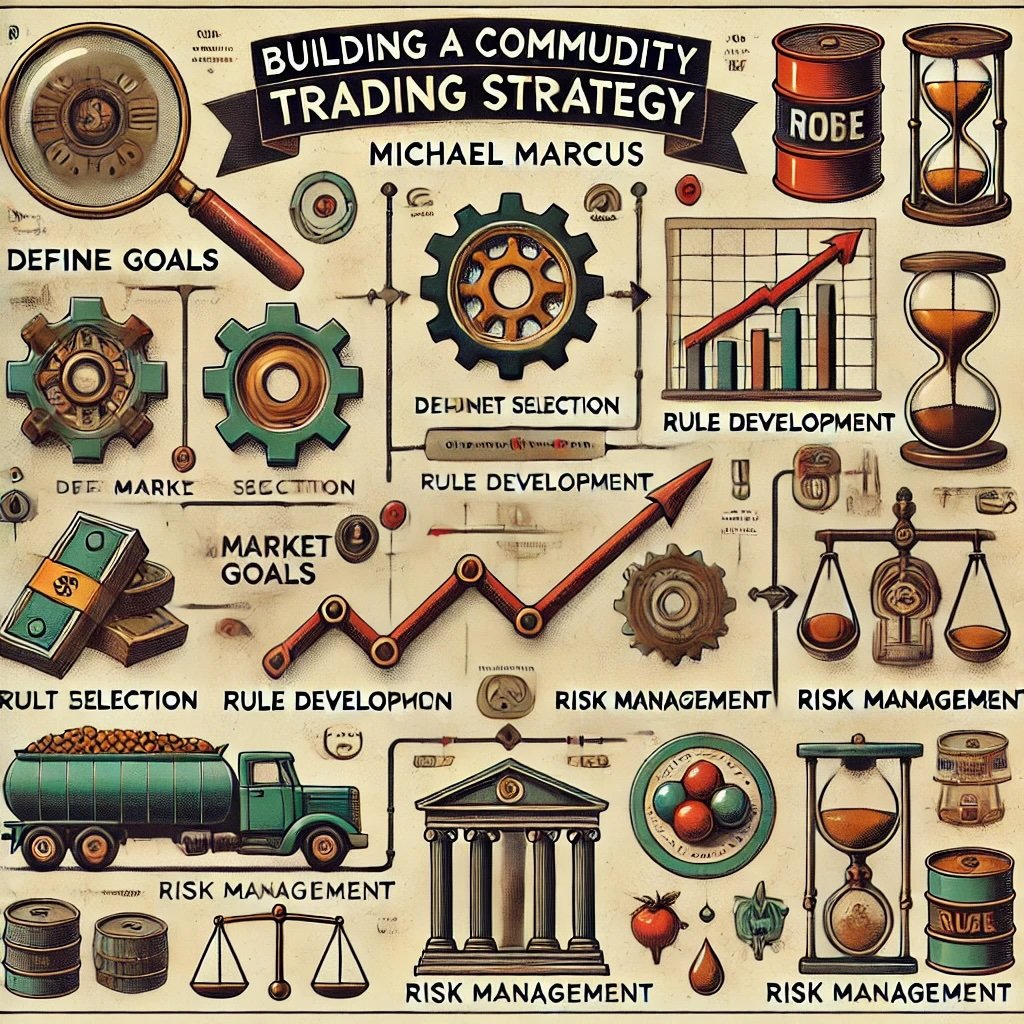
Building a Commodity Trading Strategy
Step-by-Step Guide to Developing a Commodity Trading Strategy Inspired by Marcus
Developing a robust commodity trading strategy inspired by Michael Marcus involves a series of well-defined steps. Here’s how you can build and implement a strategy that mirrors Marcus’s successful approach:
- Define Your Trading Goals:
- Objectives: Clearly outline your trading goals, whether it’s capital appreciation, income generation, or risk management.
- Time Horizon: Determine your investment time frame, as it will influence your trading style and strategy.
- Select Suitable Commodity Markets:
- Diverse Selection: Choose a diverse range of commodity markets, including energy, metals, agricultural products, and currencies.
- Liquidity Considerations: Focus on highly liquid markets to ensure ease of entry and exit, minimizing slippage and execution delays.
- Conduct Market Analysis:
- Trend Identification: Use technical analysis tools like moving averages, trendlines, and momentum indicators to identify prevailing market trends.
- Fundamental Analysis: Incorporate fundamental analysis to understand the underlying factors driving commodity prices, such as supply and demand dynamics, geopolitical events, and economic indicators.
- Develop Trading Rules:
- Entry Criteria: Define clear criteria for entering trades, such as breakout levels, trend confirmation, and technical signals.
- Exit Criteria: Establish rules for exiting trades, including profit targets, trend reversals, and stop-loss levels.
- Position Sizing: Determine how much capital to allocate to each trade based on market volatility and risk tolerance.
- Implement Risk Management Techniques:
- Position Sizing: Use volatility-based position sizing to control exposure and manage risk effectively.
- Stop-Loss Orders: Set stop-loss orders to limit potential losses on each trade.
- Diversification: Spread investments across multiple markets to reduce the impact of adverse movements in any single market.
- Backtest Your Strategy:
- Historical Testing: Use historical data to test the performance of your trading strategy, assessing its effectiveness across different market conditions.
- Performance Metrics: Evaluate key performance metrics such as return on investment, drawdowns, and win-loss ratios to gauge the strategy’s viability.
- Execute Trades:
- Automate Where Possible: Utilize trading platforms that allow for automated execution of trades based on your predefined rules, ensuring consistency and reducing emotional interference.
- Monitor Performance: Continuously monitor your trades and overall portfolio performance, making adjustments as necessary to maintain alignment with your strategy.
- Review and Refine:
- Regular Assessment: Periodically review the performance of your trading strategy, identifying strengths and areas for improvement.
- Adjust Strategies: Refine your trading rules and risk management techniques based on performance data and evolving market conditions.
Tip: Start with a clear trading plan and follow it meticulously, adjusting only when solid evidence and analysis indicate the need for change.
Identifying and Analyzing Potential Trades in the Commodity Markets
To effectively identify and analyze potential trades in the commodity markets, follow these steps:
- Market Scanning:
- Use stock screeners and market scanning tools to identify commodities that are exhibiting strong trends or breaking out of key price levels.
- Focus on commodities with high liquidity and significant trading volume to ensure smooth execution of trades.
- Technical Analysis:
- Trend Indicators: Apply trend indicators like moving averages (e.g., 50-day, 200-day) to identify the direction and strength of trends.
- Momentum Indicators: Use indicators such as the Relative Strength Index (RSI) and Moving Average Convergence Divergence (MACD) to gauge the momentum of price movements.
- Support and Resistance Levels: Identify key support and resistance levels where price reversals are likely, aiding in setting entry and exit points.
- Fundamental Analysis:
- Supply and Demand Dynamics: Understand the fundamental factors influencing commodity prices, such as production levels, consumption rates, and inventory data.
- Geopolitical Events: Monitor geopolitical developments that could impact commodity markets, such as trade policies, conflicts, or natural disasters.
- Economic Indicators: Track economic indicators like GDP growth, inflation rates, and interest rates, which can influence commodity prices.
- Risk Assessment:
- Volatility Analysis: Assess the volatility of the commodity to determine appropriate position sizing and stop-loss levels.
- Correlation Analysis: Analyze the correlation between different commodities to identify diversification opportunities and manage portfolio risk.
Tip: Combine technical and fundamental analysis to gain a comprehensive understanding of potential trades, enhancing your ability to make informed decisions.
Tips for Refining and Adapting the Strategy Over Time
As markets evolve, it’s essential to continuously refine and adapt your trading strategy to maintain its effectiveness. Here are some tips to help you do just that:
- Stay Informed:
- Keep up with the latest market news, trends, and developments that could impact commodity prices.
- Subscribe to industry publications, follow market analysts, and participate in trading forums to stay updated.
- Continuous Learning:
- Invest in your education by attending workshops, webinars, and courses focused on commodity trading and trend-following strategies.
- Read books and research papers by successful traders like Michael Marcus to gain deeper insights into effective trading methodologies.
- Performance Monitoring:
- Regularly review your trading performance, analyzing both successful trades and losses to identify patterns and areas for improvement.
- Use performance metrics such as win rate, average profit per trade, and maximum drawdown to evaluate the effectiveness of your strategy.
- Flexibility and Adaptation:
- Be willing to adjust your trading rules and strategies based on performance data and changing market conditions.
- Incorporate new indicators or refine existing ones to enhance trend identification and trading signals.
- Seek Feedback:
- Engage with other traders and seek feedback on your trading strategies. Constructive criticism can provide valuable perspectives and highlight blind spots.
- Participate in trading communities where you can share experiences, discuss strategies, and learn from others’ successes and mistakes.
Tip: Embrace a mindset of continuous improvement, always looking for ways to enhance and optimize your trading strategy based on empirical evidence and evolving market dynamics.
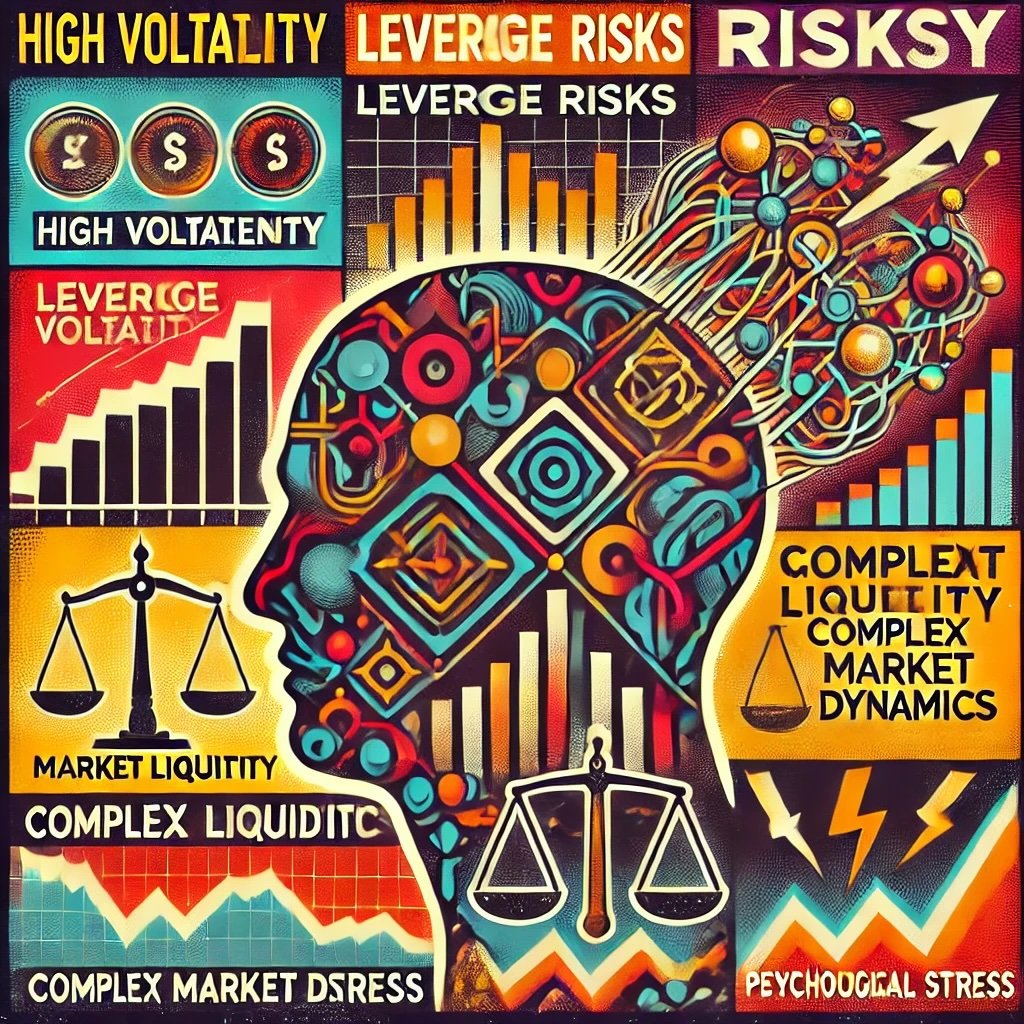
Challenges of Commodity Trading
Potential Pitfalls and Difficulties in Adopting a Commodity Trading Approach
Commodity trading offers lucrative opportunities, but it also comes with its own set of challenges. Michael Marcus acknowledges these potential pitfalls and emphasizes the importance of being prepared to navigate them effectively. Here are some of the key challenges:
- High Volatility:
- Commodity markets are inherently volatile, with prices subject to rapid and significant fluctuations. This volatility can lead to substantial profits but also considerable losses if not managed properly.
- Leverage Risks:
- The use of leverage can amplify both gains and losses. While leverage can enhance returns, it also increases the potential for significant losses, especially in volatile markets.
- Market Liquidity:
- Not all commodities are equally liquid. Trading in less liquid markets can result in slippage and difficulties in entering or exiting positions at desired price levels.
- Complex Market Dynamics:
- Commodity prices are influenced by a myriad of factors, including geopolitical events, weather conditions, and economic indicators. Navigating these complex dynamics requires comprehensive analysis and adaptability.
- Psychological Stress:
- The emotional toll of dealing with high-stakes trades and significant capital exposure can lead to psychological stress, impacting decision-making and overall trading performance.
- Regulatory Changes:
- Changes in regulations can impact commodity markets, introducing new rules that affect trading strategies and market behavior.
How to Overcome Common Challenges in the Commodities Market
To successfully navigate the challenges of commodity trading, Michael Marcus employs several strategies:
- Robust Risk Management:
- Implementing strict risk management techniques, such as position sizing and stop-loss orders, helps in controlling potential losses and protecting capital.
- Diversification:
- Trading across multiple commodity markets reduces exposure to any single market’s adverse movements, enhancing portfolio resilience.
- Continuous Education:
- Staying informed about market developments and continuously learning helps traders adapt to changing conditions and make informed decisions.
- Emotional Discipline:
- Developing emotional resilience and maintaining discipline ensures that traders stick to their strategies, even during periods of high volatility or unexpected market movements.
- Leverage Control:
- Using leverage cautiously and within predefined limits prevents excessive risk exposure and protects against significant losses.
- Technical and Fundamental Analysis:
- Combining technical and fundamental analysis provides a comprehensive understanding of market trends and factors driving price movements, aiding in more accurate trading decisions.
Tip: Anticipate and plan for potential challenges by implementing comprehensive risk management and staying adaptable to evolving market conditions.
The Importance of Staying Informed and Adaptable in a Constantly Changing Market
In the fast-paced world of commodity trading, staying informed and adaptable is crucial for long-term success. Michael Marcus underscores the importance of being proactive in monitoring market trends, economic indicators, and geopolitical events that can influence commodity prices.
- Market Intelligence: Regularly gather and analyze market intelligence to stay ahead of emerging trends and potential disruptions.
- Flexible Strategies: Develop flexible trading strategies that can be adjusted based on changing market conditions and new information.
- Technological Integration: Utilize advanced trading tools and platforms to enhance your ability to analyze and respond to market changes swiftly and effectively.
Tip: Cultivate a habit of continuous learning and market monitoring. The more informed you are, the better equipped you will be to make strategic trading decisions.

How to Start Trading Like Michael Marcus
Practical Steps for Implementing Marcus’s Strategies in Your Own Trading
Embarking on a trading journey inspired by Michael Marcus involves a systematic approach that incorporates his core principles and strategies. Here’s a step-by-step guide to help you get started:
- Educate Yourself:
- Read Key Literature: Begin by reading Michael Marcus’s articles, interviews, and any available publications. Additionally, study books like Way of the Turtle by Curtis Faith and The Complete TurtleTrader by Michael Covel to gain insights into systematic trading strategies.
- Understand Commodity Markets: Develop a thorough understanding of the commodity markets you intend to trade, including their unique characteristics and drivers.
- Define Your Trading Goals:
- Objectives: Clearly outline what you aim to achieve through trading—be it capital growth, income generation, or diversification of your investment portfolio.
- Risk Tolerance: Assess your risk tolerance to determine how much capital you are willing to risk on each trade and overall.
- Select Suitable Markets:
- Diversification: Choose a variety of commodity markets to trade, such as energy, metals, agricultural products, and currencies. This diversification helps in spreading risk and capturing different market trends.
- Liquidity Considerations: Focus on highly liquid markets to ensure smooth execution of trades and minimize the impact of slippage.
- Develop a Trading Plan:
- Trading Rules: Define clear entry and exit rules based on trend following and breakout strategies. Specify the technical indicators you will use to identify trends and signals.
- Risk Management: Incorporate risk management techniques, including position sizing and stop-loss orders, to protect your capital and manage risk effectively.
- Trade Execution: Plan how you will execute trades, whether manually or through automated systems, ensuring consistency and discipline.
- Implement Risk Management Techniques:
- Position Sizing: Use volatility-based position sizing to determine the appropriate size for each trade, ensuring that risk remains consistent across all positions.
- Stop-Loss Orders: Set stop-loss orders to limit potential losses on each trade, protecting your capital from adverse market movements.
- Diversification: Spread your investments across multiple markets to reduce the impact of any single market’s poor performance.
- Use Trading Tools and Platforms:
- Charting Software: Utilize advanced charting software like TradingView, MetaTrader, or NinjaTrader to analyze market trends and identify trading signals.
- Automated Trading Systems: Consider using automated trading systems or algorithmic trading platforms to execute trades based on your predefined rules, enhancing consistency and reducing emotional interference.
- Data Analytics Tools: Leverage tools like Python with libraries such as Pandas and NumPy for in-depth data analysis and backtesting of your trading strategies.
- Backtest Your Strategy:
- Historical Testing: Use historical market data to test your trading strategy, evaluating its performance across different market conditions.
- Performance Metrics: Analyze key performance metrics such as return on investment, drawdowns, and win-loss ratios to assess the viability and robustness of your strategy.
- Refine and Optimize: Based on backtesting results, refine your trading rules and risk management techniques to enhance performance.
- Start Trading with Real Capital:
- Begin Small: Start with a small portion of your capital to minimize risk as you gain experience and confidence in your trading strategy.
- Gradual Scaling: Gradually increase your position sizes as you achieve consistent positive results, maintaining a balanced and disciplined approach.
- Monitor and Review Your Trades:
- Performance Tracking: Continuously monitor your trading performance, keeping track of profits, losses, and overall portfolio health.
- Trade Journaling: Maintain a detailed trading journal to document each trade, including the rationale behind it and its outcome. This practice helps in identifying patterns and areas for improvement.
- Regular Reviews: Periodically review your trading strategy and performance, making necessary adjustments to adapt to changing market conditions and improve efficiency.
- Stay Disciplined and Patient:
- Emotional Control: Maintain emotional control and stick to your trading plan, avoiding impulsive decisions based on fear or greed.
- Long-Term Focus: Focus on long-term success rather than short-term gains, allowing your trading strategy to unfold over time.
Tip: Develop a structured trading routine and adhere to it consistently. Discipline and patience are key to executing your trading strategy effectively and achieving sustained success.
Resources for Learning More About Commodity Trading Techniques
To deepen your understanding of commodity trading and refine your strategies, leverage the following resources:
- Books:
- Way of the Turtle by Curtis Faith: Offers an insider’s perspective on the Turtle Trading Experiment and the principles that guided the Turtles to success.
- The Complete TurtleTrader by Michael Covel: Chronicles the story of the Turtle Traders and delves into the strategies that made them successful.
- Commodity Trading Systems by Richard Dennis and William Eckhardt: Provides comprehensive insights into the systems and strategies used by the original Turtle Traders.
- Online Courses and Webinars:
- Investopedia Academy: Offers courses on commodity trading and trend-following strategies.
- Coursera and Udemy: Provide a range of courses on technical analysis, quantitative trading, and commodity markets.
- Trading Platforms: Many trading platforms offer webinars and tutorials on advanced trading techniques and strategies.
- Trading Communities and Forums:
- Elite Trader: A forum where traders discuss strategies, share insights, and learn from each other’s experiences.
- Reddit’s r/algotrading: A community focused on algorithmic trading and quantitative strategies, providing a platform to discuss and refine trading ideas.
- Academic Journals and Research Papers:
- Explore academic journals and financial publications for in-depth analyses of trend-following strategies, risk management, and commodity market dynamics.
Tip: Continuously seek out and engage with educational resources and trading communities to stay informed and inspired on your trading journey.
Tools and Platforms to Support Commodity Trading Activities
Selecting the right tools and platforms is crucial for implementing Michael Marcus’s trading strategies effectively. Here are some recommended options:
- Charting and Technical Analysis Tools:
- TradingView: Offers advanced charting features, a wide range of technical indicators, and social trading capabilities.
- MetaTrader 4/5: Popular platforms for forex and commodity trading, providing robust charting tools and automated trading options.
- NinjaTrader: A powerful platform for futures and commodity trading, with extensive customization and automation capabilities.
- Automated Trading Systems:
- QuantConnect: Provides a platform for developing and backtesting algorithmic trading strategies using historical data.
- TradeStation: Offers comprehensive tools for automated trading and strategy development.
- Interactive Brokers: Supports a range of automated trading tools and APIs for custom strategy implementation.
- Data Analytics and Backtesting Tools:
- Python: A versatile programming language with libraries like Pandas, NumPy, and Matplotlib, ideal for data analysis and backtesting.
- R: A statistical programming language used for data analysis and visualization, suitable for developing and testing trading strategies.
- Portfolio Visualizer: An online tool for portfolio analysis and backtesting various investment strategies.
- Risk Management Tools:
- Riskalyze: Helps in assessing and managing portfolio risk, ensuring alignment with your risk tolerance.
- Trade Management Tools: Platforms like ThinkorSwim offer advanced trade management features, including automated stop-loss orders and position sizing calculators.
Tip: Invest in robust trading tools and platforms that align with your trading style and provide the necessary features for effective analysis, execution, and risk management.
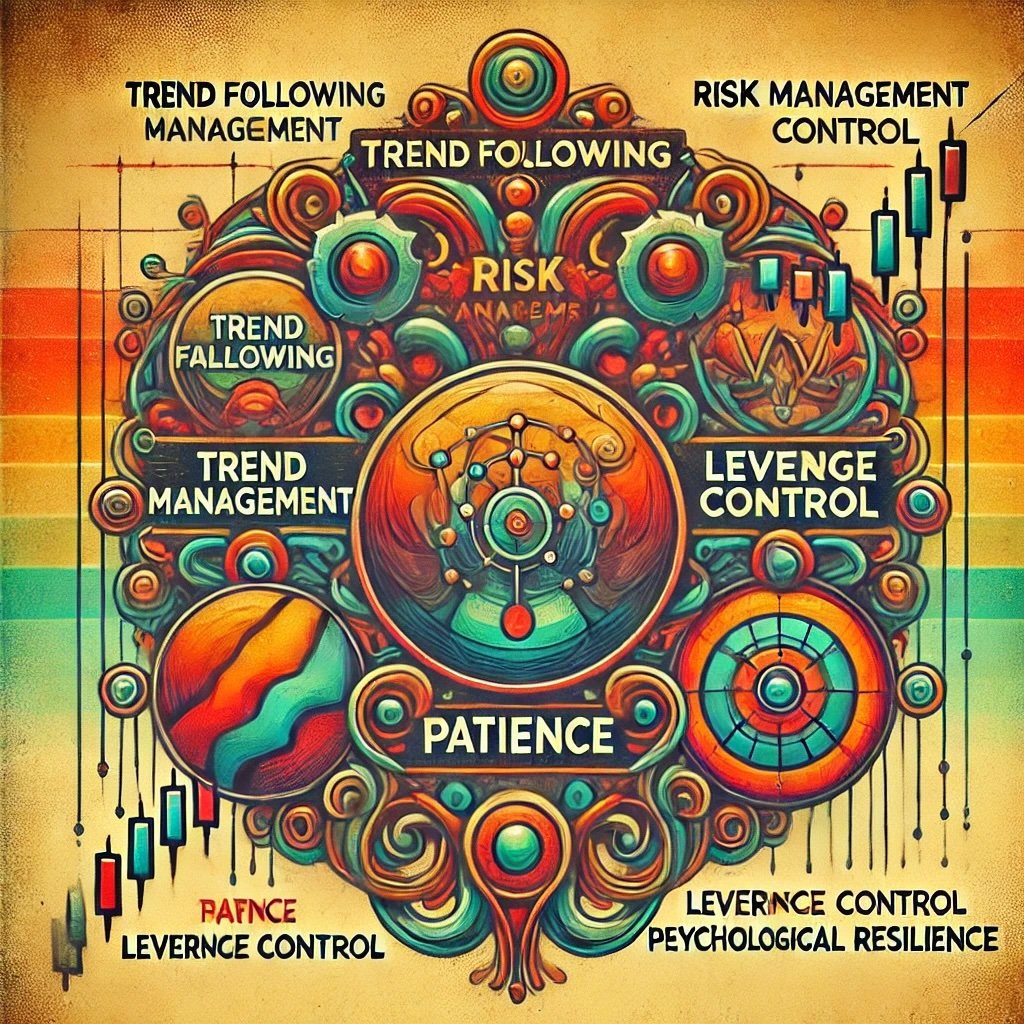
Michael Marcus (Commodity Trading Wizard): 12-Question FAQ
Who is Michael Marcus and why is he notable?
A famed “Commodity Trading Wizard,” Marcus is known for disciplined, trend-following futures trading, robust risk controls, and a psychology-first approach that turned modest stakes into outsized gains over time.
What core philosophy guides his approach?
Cut losses fast, ride winners, and size positions by volatility. Marcus treats trading as executing rules, not opinions—letting price trends, not predictions, drive decisions.
Which markets fit a Marcus-style strategy?
Liquid futures across energy, metals, softs, grains, rates, FX, and (for access) liquid ETFs. Breadth across uncorrelated markets improves the odds of catching big trends.
How are entries typically defined?
Price-based, rule-driven breakouts (e.g., close above prior highs for longs/below lows for shorts) confirmed by trend filters like moving averages or momentum.
How are exits handled?
Shorter-lookback counter-signals and/or ATR-based trailing stops: cut losers quickly and trail winners to let convex payoffs emerge.
How is position sizing done?
Volatility scaling using ATR (“N”) so each trade risks a small, similar fraction of equity (e.g., ~0.5–2% per position). Higher volatility ⇒ smaller size.
What risk controls are essential?
Per-trade risk caps, portfolio heat limits, correlation/sector caps, max open positions, and strict adherence to predefined rules to avoid emotional overrides.
How does psychology factor in?
Marcus stresses emotional control, patience, and resilience. Journaling, routine reviews, and automation help keep behavior aligned with the plan.
What are common beginner mistakes?
Oversizing, chasing noise, curve-fitting parameters, ignoring costs/slippage, and abandoning systems during normal drawdowns.
How can a retail trader implement this today?
Define an IPS (universe, entries, exits, sizing, heat), backtest with realistic costs, paper trade, then deploy small with basket/OTO orders and periodic reviews.
How should the strategy adapt to modern markets?
Keep the core, refine the plumbing: stronger liquidity filters, realistic slippage models, dynamic heat control, and scheduled parameter checks—plus ETFs for access if needed.
What performance profile should be expected?
Lumpy: many small losses, a few large winners. Edge appears over multi-year horizons across many markets; patience and diversification are crucial.
Key Takeaways from Michael Marcus’s Trading Approach
Michael Marcus’s trading approach offers a powerful blend of trend following, disciplined risk management, leverage control, and psychological resilience. The key takeaways from his methodology include:
- Trend Following: Identifying and capitalizing on sustained market trends to maximize returns.
- Risk Management: Implementing robust risk management techniques, including position sizing, stop-loss orders, and diversification, to protect capital and ensure long-term sustainability.
- Leverage Control: Using leverage judiciously to amplify returns while managing associated risks effectively.
- Patience and Discipline: Maintaining patience and discipline to adhere to trading rules and avoid impulsive decisions.
- Psychological Resilience: Developing emotional control and mental resilience to navigate the psychological challenges of trading.
- Continuous Learning: Embracing a mindset of continuous learning and adaptation to refine and optimize trading strategies.
Final Thoughts on the Relevance of Commodity Trading in Today’s Markets
In today’s dynamic and interconnected markets, commodity trading remains highly relevant and offers unique opportunities for traders. Michael Marcus’s approach to commodity trading—grounded in systematic, rule-based strategies and disciplined risk management—provides a robust framework for navigating the complexities of the markets.
- Adaptability: The principles of trend following and risk management are adaptable to various market conditions, making them effective in both bullish and bearish environments.
- Technological Advancements: Modern trading technologies enhance the implementation of Marcus’s strategies, providing greater precision and efficiency.
- Global Market Access: The globalization of markets offers diverse trading opportunities, allowing traders to capitalize on trends across different regions and sectors.
Tip: Embrace the timeless principles of commodity trading while leveraging modern technologies and market insights to enhance your trading effectiveness and adaptability.
Encouragement for Readers to Explore and Practice the System
If you’re eager to enhance your trading skills and achieve consistent success, exploring and practicing Michael Marcus’s trading strategies can be a transformative endeavor. By adopting his disciplined approach and systematic methodologies, you can navigate the volatile commodity markets with greater confidence and strategic insight.
Take Action:
- Educate Yourself: Immerse yourself in the literature on commodity trading and trend-following strategies. Read Way of the Turtle by Curtis Faith and The Complete TurtleTrader by Michael Covel to gain foundational knowledge.
- Develop Your Trading Plan: Define clear trading rules, risk management techniques, and position sizing strategies inspired by Marcus’s approach.
- Utilize Advanced Tools: Invest in robust trading platforms and analytical tools that support systematic trading and data-driven decision-making.
- Practice Consistently: Use demo accounts to practice your trading strategy, refining your approach based on real-time feedback and performance data.
- Stay Disciplined: Maintain emotional control and adhere strictly to your trading plan, avoiding impulsive decisions that can undermine your strategy.
- Seek Mentorship and Community Support: Engage with trading communities and seek mentorship from experienced traders to gain insights and enhance your trading knowledge.
- Continuously Monitor and Adapt: Regularly review your trading performance, making necessary adjustments to your strategy to align with evolving market conditions and personal goals.
By embracing Michael Marcus’s trading principles, you can build a disciplined, resilient, and profitable trading strategy that stands the test of time and market volatility. Start your journey today, and unlock the potential of systematic, data-driven commodity trading to achieve your financial aspirations.
Important Information
Comprehensive Investment Disclaimer:
All content provided on this website (including but not limited to portfolio ideas, fund analyses, investment strategies, commentary on market conditions, and discussions regarding leverage) is strictly for educational, informational, and illustrative purposes only. The information does not constitute financial, investment, tax, accounting, or legal advice. Opinions, strategies, and ideas presented herein represent personal perspectives, are based on independent research and publicly available information, and do not necessarily reflect the views or official positions of any third-party organizations, institutions, or affiliates.
Investing in financial markets inherently carries substantial risks, including but not limited to market volatility, economic uncertainties, geopolitical developments, and liquidity risks. You must be fully aware that there is always the potential for partial or total loss of your principal investment. Additionally, the use of leverage or leveraged financial products significantly increases risk exposure by amplifying both potential gains and potential losses, and thus is not appropriate or advisable for all investors. Using leverage may result in losing more than your initial invested capital, incurring margin calls, experiencing substantial interest costs, or suffering severe financial distress.
Past performance indicators, including historical data, backtesting results, and hypothetical scenarios, should never be viewed as guarantees or reliable predictions of future performance. Any examples provided are purely hypothetical and intended only for illustration purposes. Performance benchmarks, such as market indexes mentioned on this site, are theoretical and are not directly investable. While diligent efforts are made to provide accurate and current information, “Picture Perfect Portfolios” does not warrant, represent, or guarantee the accuracy, completeness, or timeliness of any information provided. Errors, inaccuracies, or outdated information may exist.
Users of this website are strongly encouraged to independently verify all information, conduct comprehensive research and due diligence, and engage with qualified financial, investment, tax, or legal professionals before making any investment or financial decisions. The responsibility for making informed investment decisions rests entirely with the individual. “Picture Perfect Portfolios” explicitly disclaims all liability for any direct, indirect, incidental, special, consequential, or other losses or damages incurred, financial or otherwise, arising out of reliance upon, or use of, any content or information presented on this website.
By accessing, reading, and utilizing the content on this website, you expressly acknowledge, understand, accept, and agree to abide by these terms and conditions. Please consult the full and detailed disclaimer available elsewhere on this website for further clarification and additional important disclosures. Read the complete disclaimer here.





Amazing Nice Blog!
This blog is so impactful for all of the traders.